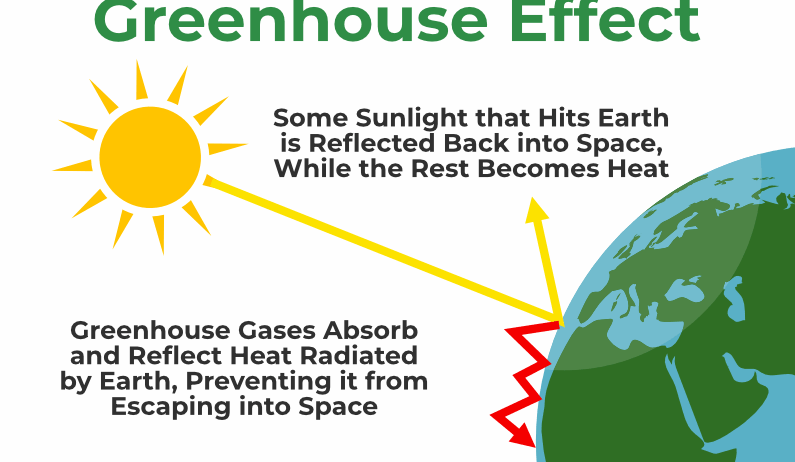The Greenhouse Effect: A Blessing in Disguise
Picture our planet as a lush garden, thriving under a radiant sun. The warmth from that sun nurtures the diverse flora and fauna that occupy this vibrant ecosystem. However, this equilibrium is delicately sustained by an invisible army of gases that blanket our Earth—greenhouse gases. Though often vilified in discussions surrounding climate change, the greenhouse effect is essential, performing the dual role of protector and sustainer of life as we know it.
In this discourse, we delve into the nuances of the greenhouse effect and the pivotal role of greenhouse gases in structuring our climate. Understanding this phenomenon is crucial for grasping the broader implications it has on environmental science and ecological balance.
The Symphony of Greenhouse Gases
Just as a symphony requires various instruments to create harmonious music, our atmosphere depends on a blend of greenhouse gases to cultivate the optimal conditions for life. The principal actors in this atmospheric orchestra are carbon dioxide (CO₂), methane (CH₄), nitrous oxide (N₂O), and water vapor, each contributing distinctively to the overarching score of our climate.
Carbon dioxide, perhaps the most discussed of the group, plays the role of the string section, providing a foundational lightness while absorbing heat emitted from the Earth’s surface. Methane, the brass, is significantly more potent than CO₂ in trapping heat, albeit present in much smaller quantities. Meanwhile, nitrous oxide acts as the woodwinds, nurturing the soil but also manifesting a strong impact on global warming. Last but not least, water vapor, the percussion, punctuates weather patterns and climate cycles with its dynamic presence.
This collective endeavor creates an insulating layer around our planet, akin to a cozy blanket on a chilly night. Without this blanket, Earth would transform into a frigid wasteland, inhospitable and unforgiving. In this regard, greenhouse gases act not merely as culprits in climate change discussions but as crucial enablers of life, fostering the warm embrace that sustains ecosystems.
Underpinning Life: The Vital Balance
The significance of the greenhouse effect lies in its ability to maintain the delicate balance that governs our environment. Through the greenhouse effect, solar energy is captured, ensuring that the Earth remains a habitable haven. If we think of Earth as a finely tuned instrument, the greenhouse effect is what keeps it perfectly in pitch—not too hot, not too cold, but just right to support diverse forms of life.
This balance is vital for agriculture, allowing crops to flourish in climates that promote biodiversity and high yields. The effect of greenhouse gases propels plant photosynthesis, allowing food chains to thrive, enabling other organisms to derive energy from sunlit flora. Additionally, it regulates our weather patterns, which has far-reaching consequences on water supplies and the distribution of terrestrial habitats.
However, like a well-meaning gardener who over-fertilizes their plants, humanity has disrupted this equilibrium. The remarkable ability of greenhouse gases to capture warmth has become a double-edged sword due to anthropogenic activities. Industrialization, deforestation, and excessive consumption have elevated the concentrations of CO₂ and methane, leading to an enhanced greenhouse effect. The resulting climatic shifts present threats that could undo centuries of ecological harmony.
Climate Change: The Stifled Symphony
With increasing atmospheric concentrations of greenhouse gases, we now find ourselves grappling with the discordant notes of climate change. The repercussions of this phenomenon are multifaceted and undeniably intricate, affecting ecosystems, weather patterns, sea levels, and biodiversity.
As temperatures rise, species face existential challenges. The warming planet disturbs migration patterns and hibernation cycles, throwing entire ecological systems into disarray. Coral reefs, the vibrant undersea gardens, are suffocating under rising sea temperatures, causing widespread bleaching and biodiversity losses. Moreover, the increased incidence of extreme weather events presents dire manifestations of the collapsing balance that greenhouse gases help maintain.
More profoundly, marginalized communities bear the brunt of climate repercussions, revealing a deeply embedded social injustice linked to environmental degradation. Those with the least responsibility often show the greatest vulnerability to flooding, droughts, and food scarcity. If greenhouse gases can be understood as both a lifeline and a peril, our societal dialogue must evolve to include at-risk populations in conversations about climate mitigation and adaptation.
Towards a Sustainable Future
Reflecting upon the fiscal and ethical ripple effects of our actions is imperative for steering toward sustainable practices. Innovating technologies that effectively reduce greenhouse gas emissions while embracing renewable energy solutions becomes paramount. By leveraging solar, wind, and other alternative energy sources, we can begin to restore the balance that fuels life.
On an individual scale, adopting more eco-conscious lifestyles and advocating for systemic change form critical steps towards a robust future. Consider your consumption patterns, supporting businesses that practice sustainability, and encouraging regenerative agriculture can collectively pivot societies toward greener alternatives.
In conclusion, the greenhouse effect is indeed a delicate yet formidable force that knits together the ecology of our planet, rendering it a vibrant abode brimming with life. Understanding its significance is not merely an academic endeavor but a call to action for stewardship and responsibility. While unraveling this enigmatic tapestry, let us endeavor to weave it anew—one that harmonizes human pursuits with the conservation of our Earth’s invaluable resources.






